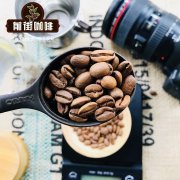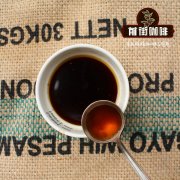Introduction to Cuban Coffee Crystal Mountain? What are the characteristics of Cuban coffee?

Professional coffee knowledge exchange more coffee bean information please follow the coffee workshop (Wechat official account cafe_style)
Cuba, located in the Caribbean, is an island country under communist rule, and its capital is Havana. Cuba is famous not only for its snow-white beaches and cigar tobacco, but also for its excellent coffee. Cuba has a long history of growing coffee, and Jos é Antonio Gelabert introduced the first coffee factory to Cuba in 1748. In 1791, when slavery was abolished during the Haitian revolution, French colonists fled to Cuba, bringing better methods of coffee production to Cuba. Before the era of Castro, Cuba's coffee industry boomed, and coffee beans were once Cuba's number one export, with more "sugar" than life's necessities. In the mid-1950s, Cuba exported more than 20000 metric tons (22046 short tons) of coffee beans a year, all of which were sold at high prices, with most of the coffee exported to Europe, especially the Netherlands and Germany. In the late 19th century, the price of local coffee plummeted because of government policies and the chaos of the international political situation, so farmers turned to plant other crops.
Where is Crystal Mountain?
"Crystal Mountain" is not the name of Cuba's producing area. "Crystal Mountain" is the highest grade of coffee in the Cuban official coffee association classification system. The Cuban Coffee Association classifies coffee beans into nine grades according to particle size and flavor, with the highest being Crystal Mountain, Extra turquino, Turquino, Altura, Montana, Cumbre, Serrano superior, Serrano Corriente and Caracolillo.
At present, most coffee farms in Cuba are state-owned, but in 1990 the government released part of the land for coffee farmers to grow, but coffee production is still less than in previous years, Crystal Mountain production is very small, and coastal areas are hit by hurricanes from time to time, resulting in a shortage of supplies. Cuban coffee is mainly sold to Japan and France, while Japan almost monopolizes the highest quality Crystal Mountain Crystal Mountain, so it is rare to get high-quality Cuban coffee.
The planting area of Cuban coffee is divided into three parts, which are planted on the slopes and valleys above sea level from 1000 to 2000 meters above sea level, with the largest proportion of Santiago de Cuba and Granma in the east accounting for 70% of the whole country, followed by the central villa Clara and Sancti Spiritus accounting for 20%, and the western Pinar del Rio accounting for 10%. These areas provide a quite comfortable growing environment for coffee beans, with an average temperature of 21 degrees in winter and 25 degrees in summer. The rainfall is moderate, the humidity is evenly distributed all the year round, and the soil is deep and fertile. All planted Arabica (Arabica) varieties, to Tibica (Typica). In 2000, the United Nations Educational, Scientific and Cultural Organization (UNESCO) listed two coffee producing areas, Santiago and Guantanamo, as World Heritage sites.
Cuban Crystal Mountain coffee is a typical island bean, taste clean, delicate, slightly sour but not exciting taste, with a special sweet flavor, very charming. Oh, very charming.
Important Notice :
前街咖啡 FrontStreet Coffee has moved to new addredd:
FrontStreet Coffee Address: 315,Donghua East Road,GuangZhou
Tel:020 38364473
- Prev

Why the higher the altitude, the better the coffee?
Professional coffee knowledge exchange more coffee bean information Please pay attention to the coffee workshop (Wechat official account cafe_style) Coffee raw beans are generally graded according to raw bean size, defect rate and altitude. The size and defect rate of raw beans are easy to understand, but many people don't quite understand. Why do some producing areas use the altitude of coffee beans as the basis for grading? many coffee sellers also boast of their own.
- Next

Columbia Coca Micro batch Maxiso Select Colombian Coffee is good?
Columbia Coca Micro batch Maxiso Select Colombian Coffee is good? Country: Columbia: altitude: 1880 m treatment: washing grade: Excelso varieties: Caturra flavor description: White grapes, almonds, spices, maple syrup, chocolate, thick Macizo, located in south-central Colombia, for the conservation of nature at the junction of Cauca and Vera
Related
- Detailed explanation of Jadeite planting Land in Panamanian Jadeite Manor introduction to the grading system of Jadeite competitive bidding, Red bid, Green bid and Rose Summer
- Story of Coffee planting in Brenka region of Costa Rica Stonehenge Manor anaerobic heavy honey treatment of flavor mouth
- What's on the barrel of Blue Mountain Coffee beans?
- Can American coffee also pull flowers? How to use hot American style to pull out a good-looking pattern?
- Can you make a cold extract with coffee beans? What is the right proportion for cold-extracted coffee formula?
- Indonesian PWN Gold Mandrine Coffee Origin Features Flavor How to Chong? Mandolin coffee is American.
- A brief introduction to the flavor characteristics of Brazilian yellow bourbon coffee beans
- What is the effect of different water quality on the flavor of cold-extracted coffee? What kind of water is best for brewing coffee?
- Why do you think of Rose Summer whenever you mention Panamanian coffee?
- Introduction to the characteristics of authentic blue mountain coffee bean producing areas? What is the CIB Coffee Authority in Jamaica?

